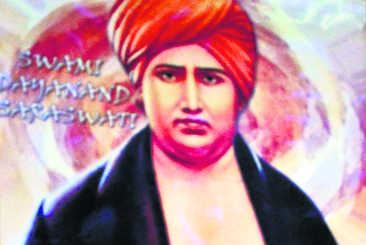Vishal Joshi
The important socio-religious movement of the Arya Samaj started gaining momentum in Haryana after its founder Swami Dayananda Saraswati visited Rewari in 1869.
KC Yadav, an eminent historian, says that Rao Yudishter Singh was instrumental in bringing Dayananda to Haryana. Rao was the son of legendary Rao Tula Ram, who had significantly participated in the uprising of 1857.
Yadav says Swami Dayananda established Srimad Swami Dayananda Gaushala in Rewari at the behest of Rao Yudishter.
“Dayananda was a great votary of cow protection and the Rewari gaushala was the first in north India to be set up by the Samaj. Rao had arranged a series of lectures by Dayananda at Bada Talab in Rewari and the congregation proved important in spreading the Arya Samaj in the region,” says Yadav.
Anupama Arya, officiating Principal of Arya Girls College, Ambala, says that besides Pandit Basti Ram, Swami Shraddhananda and Bhagat Phool Singh, the Punjab Arya Pratinidhi Sabha contributed to promoting the Arya Samaj in the region.
Anupama has written a book “Religion and Politics in India: A study of the role of Arya Samaj in Punjab and Haryana”. She says after the death of its founder, the movement was bifurcated.
“One faction founded the DAV movement with focus on adopting western education whereas the other followed the traditional Vedic education. There were more takers for DAV institutes in Punjab whereas in the Hindi-speaking areas of modern day Haryana, Gurukuls were established in accordance with the traditional values of the Arya Samaj,” she says.
The movement led by Mahatma Hansraj was not averse to the consumption of liquor and non-vegetarian dietary preferences. “On the other hand, the ideology of Gurukul promoted by Swami Shradhananda had a more powerful influence among relatively backward and traditionally rural peasantry in the Jat-dominated Hindi-speaking belt than the reformist, progressive and modernising ideology of the DAV movement,” she adds.
Yadav says the Arya Samaj attracted the peasantry castes of Jats, Ahirs and Gujjars. “In the then prevalent social practices, the peasantry castes were considered as untouchable ‘Shudras’. Since, the Arya Samaj had accorded the Kshatriya status to Jats, which the Sanatana Dharma had denied, the movement spread its roots in the Jat-dominated Deswali belt of Rohtak, Jhajjar and Sonepat districts,” he says.
Unlock Exclusive Insights with The Tribune Premium
Take your experience further with Premium access.
Thought-provoking Opinions, Expert Analysis, In-depth Insights and other Member Only Benefits
Already a Member? Sign In Now










